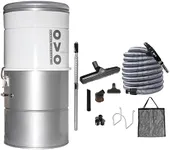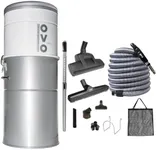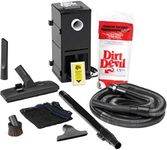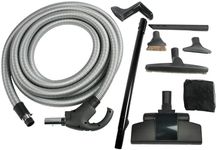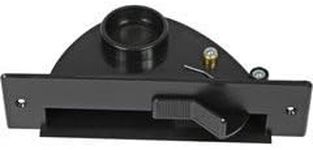Buying Guide for the Best Central Vacuum Systems
Choosing the right central vacuum system can significantly improve the cleanliness and air quality of your home. Central vacuum systems are built-in cleaning solutions that offer powerful suction and convenience compared to traditional vacuum cleaners. When selecting a central vacuum system, it's important to consider several key specifications to ensure you get the best fit for your needs. Understanding these specifications will help you make an informed decision and choose a system that meets your cleaning requirements and home layout.Suction Power (Air Watts)Suction power, measured in air watts, indicates the strength of the vacuum's ability to pick up dirt and debris. This is a crucial spec because higher suction power means more efficient cleaning. Suction power can range from around 500 to over 1000 air watts. For smaller homes or apartments, a system with 500-700 air watts may be sufficient. For larger homes or those with pets and high traffic, consider a system with 700-1000+ air watts to ensure thorough cleaning.
Motor TypeThe motor type in a central vacuum system affects its performance and longevity. There are two main types: flow-through and bypass motors. Flow-through motors are generally less expensive and suitable for smaller homes with lighter cleaning needs. Bypass motors are more durable and powerful, making them ideal for larger homes or heavy-duty cleaning. If you have a large home or require frequent, intensive cleaning, a bypass motor is a better choice.
Filtration SystemThe filtration system in a central vacuum determines how well it captures dust and allergens. Common types include bagged, bagless, and cyclonic filtration. Bagged systems are easy to maintain and hygienic, as they trap dust in disposable bags. Bagless systems use filters that need regular cleaning but save on bag costs. Cyclonic systems use centrifugal force to separate dirt from the air, requiring less frequent filter changes. If you have allergies or want low maintenance, a bagged system is ideal. For cost savings and eco-friendliness, consider bagless or cyclonic systems.
Noise LevelNoise level, measured in decibels (dB), indicates how loud the vacuum system will be during operation. Central vacuum systems are generally quieter than portable vacuums, but noise levels can still vary. Systems with noise levels below 60 dB are considered very quiet, while those above 70 dB may be louder. If you prefer a quieter environment, especially if you have young children or pets, look for a system with a lower noise level.
CapacityCapacity refers to the size of the dirt canister or bag and determines how often you need to empty it. Larger capacities mean less frequent emptying, which is convenient for larger homes or heavy use. Capacities can range from 4 to 9 gallons. For smaller homes or less frequent use, a 4-6 gallon capacity may be sufficient. For larger homes or frequent cleaning, consider a system with a 7-9 gallon capacity to reduce maintenance.
Installation and AccessoriesInstallation involves the complexity and cost of setting up the central vacuum system in your home. Some systems come with DIY installation kits, while others may require professional installation. Additionally, consider the accessories included, such as hoses, brushes, and powerheads, which can enhance the system's versatility. If you are handy and prefer to install it yourself, look for systems with comprehensive installation guides and kits. If you want a hassle-free setup, opt for professional installation. Ensure the system includes the necessary accessories for your cleaning needs.
